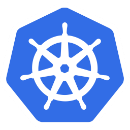ArgoCD: a Helm chart deployment, and working with Helm Secrets via AWS KMS
22 November 2020In the previous post ArgoCD: an overview, SSL configuration, and an application deploy we did a quick overview on how to work with the ArgoCD in general, and now let’s try to deploy a Helm chart. The most interesting part of this is how to enable the Helm Secrets. Had some pain with this, but… Read More »





